November 2016- Rick Santizo and Michael Malerba are the powerhouse behind Santisound, a world-class post-production facility in the heart of Hollywood.
It’s amazing sometimes. Where technology has gone nowadays is just mindboggling. Even though we’ve been using it for a long time it blows us away.
Describing themselves as ‘Authors of Sound’, Santizo and Malerba have forged a name for their post-production studio not just through the quality of their work in theatrical, broadcast and digital sound, but in particular through the creative, artistic emphasis of their approach. From behind-the-scenes featurettes to big-budget feature films, Santisound has always made extensive use of Source Elements’ solutions, being huge fans of our products right from our inception. We caught up with them to hear about their work and how Source Elements solutions support their success as post-production studio.
So tell us, how did Santisound evolve in the beginning? What inspired you to set it up?
All photos: Veronica Matus
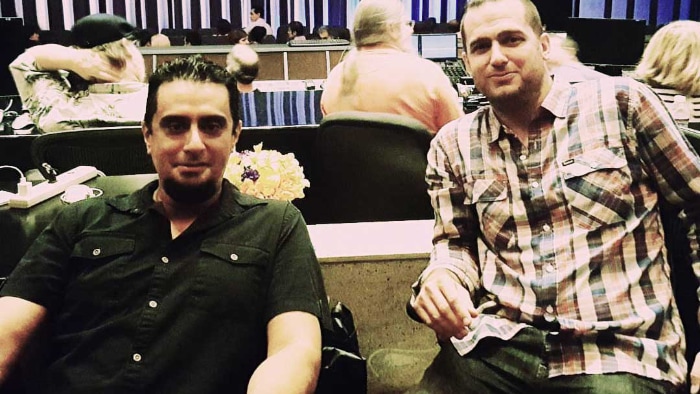
Rick Santizo (RS): Well, like all studios starting in someone’s bedroom or garage and just growing from there, my wife and I started it. We had regular day jobs, and it just sort of evolved, kept growing and growing, until eventually we formalised it as a corporation and went full time with it in 2007. Several years later Michael joined us. He’d always worked with us as a freelance engineer, but it got to the point where he was so embedded in the company it was like ‘let’s make it formal!’. It just happened very organically. There was no I’m going to go out and do this because it’s needed moment.
Originally I wanted to be a musician, but when I realised I couldn’t be a rock star I thought I’d be a studio engineer, and started going in that direction; I worked for a while at Guitar Centre and climbed the ladder there, it just organically evolved into doing my own thing, it just felt natural. There was no clear plan, it just sort of happened.
Michael Malerba (MM): The more you meet engineers and studio owners around Hollywood you realize a lot of people started out in music. That’s why I came out here, I went to music school and had some post-production classes, and whether it was chance or fate, I had a buddy who recommended that I go into TV instead of music, so that’s how I transitioned into post-production. It’s kind of inevitable in Hollywood!
RS: I think there was a conscious choice at one point on my part to move into post-production as the music industry was…rough. Just by chance I started working on some post stuff and really enjoyed it. I realised there was a lot less hand-holding needed; the jobs for the most part had a beginning and an end. Jobs came in, we finished them and they went out and we were done, as opposed to a never-ending rock n rolling, trying to finish a record. And I’ve always been a fan of movies so it just naturally progressed.
We did also consciously make a choice to go for quite a niche market in the beginning: we realised we could capitalise on a lot of behind-the-scenes footage, making-of specials, featurettes… it soon became clear to us that we were really good at them, so that’s how the post side started then it snowballed into feature films and more.
A fascinating niche to choose – are featurettes and behind-the-scenes footage harder to post-produce than regular film, with a lot of on-the-fly material?
RS: Luckily for us dealing mostly with the sound side of it, editorial mostly takes care of those issues, we don’t have to worry about it; we get given a cut and normally there’s not a lot of back and forth – maybe a few minor changes but for the most part we get a pretty locked-down product at that point.
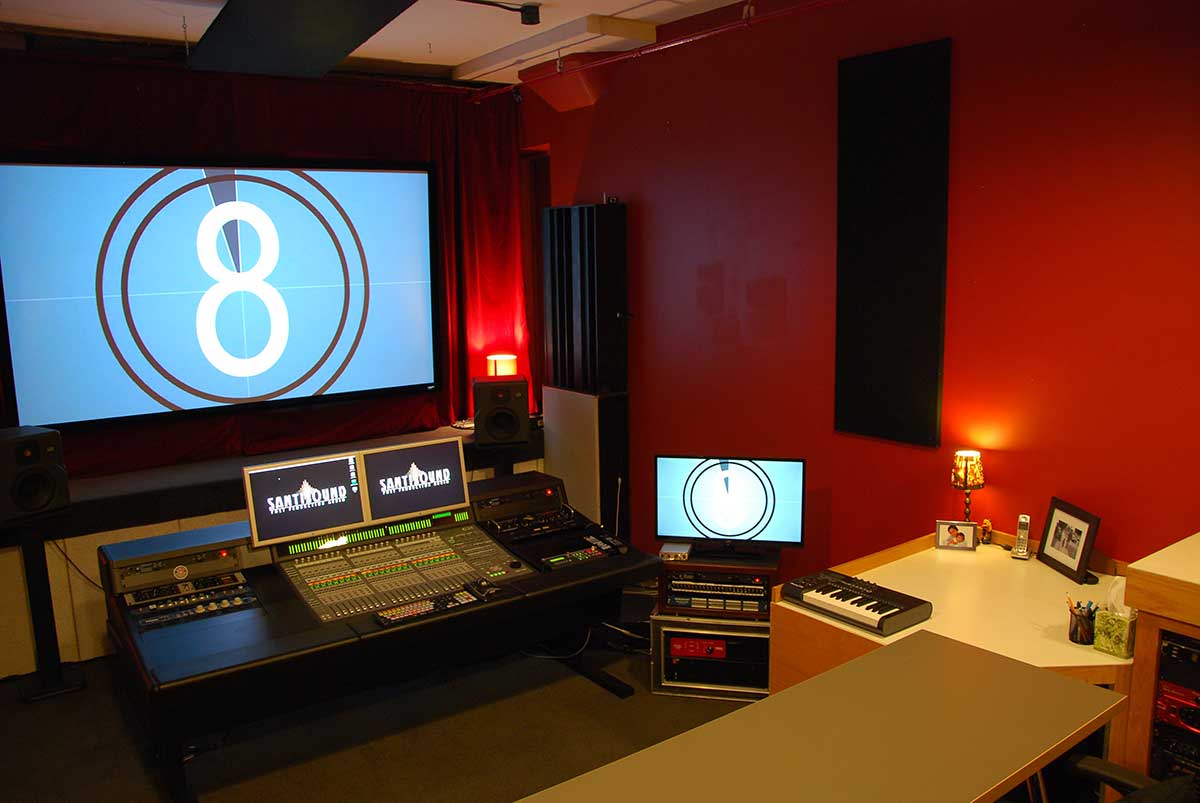
MM: But surprisingly we do get high-end projects in – things like Titanic and Planet of the Apes – and because a lot of the footage is B-roll stuff the sound can be kind of challenging. You get big directors like James Cameron doing interviews and sometimes the sound isn’t great – I’m sure on set they were just scrambling to get any interview they could. They’re shot really nice and look good but the sound is challenging to clean up – they’ll be changing sets out or doing a lot of stuff in the middle of the interviews and being really noisy!
Tell us about the gear you use…
RS: We’re a Pro Tools studio. We have three control rooms: an ADR room, a theatrical Dub Stage, and an editorial pre-dub/broadcast room – Michael’s room – where he handles sound design, sound editing, mixing for broadcast, or pre-dubbing 5.1. All three rooms are Pro Tools based – both my room and Michael’s room have a control surface, Michael has an Artist Series – 16 channels – and my room has a C24. We are toying with the idea of an S6 or maybe S3 in one of the other rooms. The ADR room doesn’t have a control surface at all because we’re using more analog gear to match on-set audio, or if we need to record some musical elements it’s mostly just keyboard and mouse with analog gear all around it.
And how does Source Elements fit into your workflow, is it mainly for ADR?
RS: Actually for a lot of purposes; for podcasts and interviews, a lot of ADR, and voiceover. We have a lot of connections around the country and around the world with studios we’ve built relationships with; we know where to send the artists and we know the connection works, it’s solid. I personally was never a fan of ISDN – the hardware, the connectivity, the cost, it was just a big ordeal – so we adopted Source Elements very early. When Source Elements first released Source-Connect we were pretty early on with that. We have connected with ISDN studios using bridging services, and we’ve used it in other capacities and other facilities, but we never installed it at Santisound. It was not something that was going to work out for us, whereas Source Elements was just the perfect solution.
We’re talking on the internet right now for free (using Source Elements on Chrome), and it hasn’t roboted, hasn’t dropped out, there’s no weirdness or strangeness, we could use this audio as it is. Why do you think more people haven’t caught onto the incredible performance of this solution?
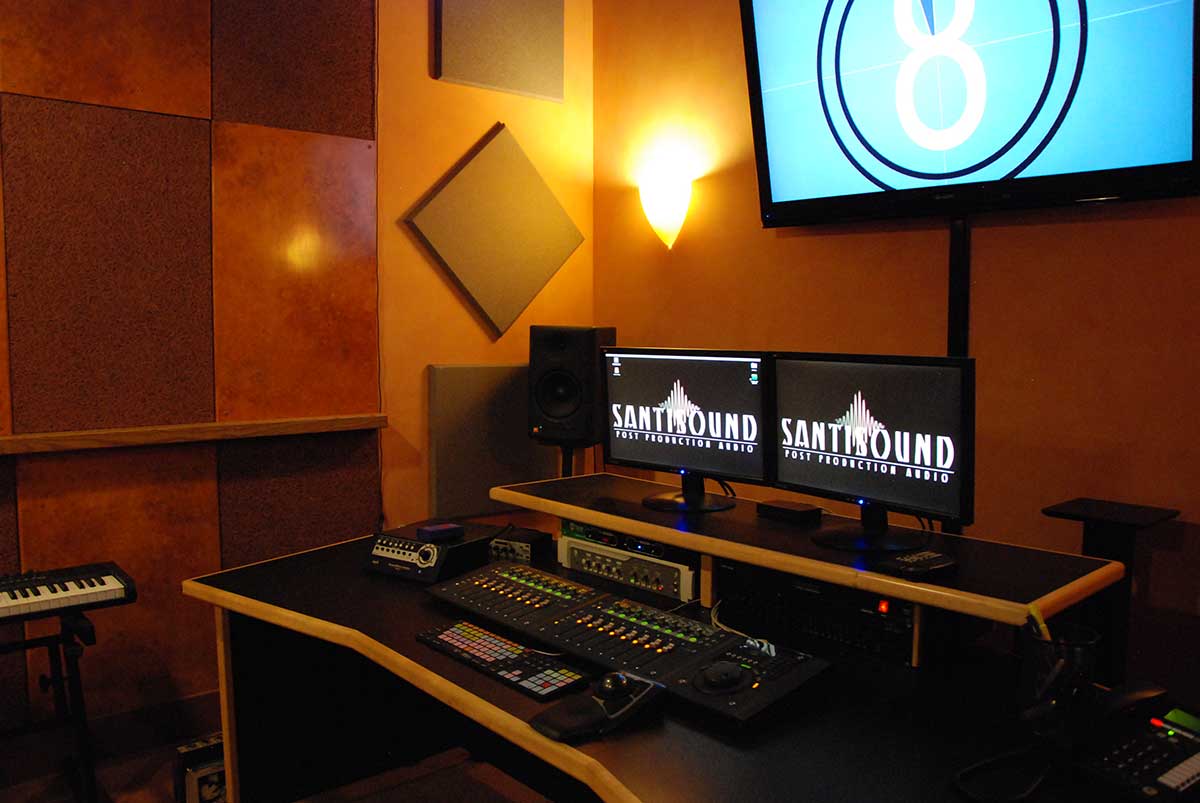
RS: I think a lot of people still aren’t trusting of the actual broadband connection part of it. Early on a lot of people had trouble setting up Source-Connect because of bandwidth issues, but these days most people have a fairly decent connection anywhere, even cell phones; but there’s still this fear of dropping out, of breaking up. And also the ISDN still looms large in the radio industry where they refuse to give up their boxes because it’s such a solid solution for them.
MM: People are used to what they’re used to and they don’t like change. I see people come in a lot and either they don’t know about Source Elements or they’re so used to the ISDN and think it’s more reliable. But once we get them on Source Elements they realize how easy and how reliable it is, and they come around.
RS: One of the biggest selling points is telling them about the improvement in quality and cost: 64kbps per channel on ISDN. If you want higher quality than a standard connection, I think you can get 384kbps with 6 channels… the cost gets really high! Source-Connect Standard goes 192kbps Stereo, Pro does 384kbps Stereo, and Surround goes way beyond that. The cost difference versus ISDN is incredible. Source-Connect Now can do up to 520kbps I believe!
And what would you say to someone that thinks Source-Connect is just the same as other consumer solutions in terms of sound quality?
RS: That they’re wrong! It’s easy to show somebody the difference between the search-engine owned version of it or the more popular international calling version of it… Even when you see interviews on big TV shows being broadcasted by this certain company, you can still hear the ‘swimmy’ sound, the breaking up, the patchy video, and when they hear the audio that comes out of Source-Connect in comparison… well the question I always get is “so we can use this audio?! We don’t have to get the audio from the other studio?” And I say “No!” Once they hear the quality and we tell them how easy it is to use, they start coming around to it.
When we have the doubters, the minute there’s a hiccup for one reason or another – maybe the router went down or the provider is having issues, immediately their response is “see! I told you it was going to break up!” But they don’t realize how much better even with that small little hiccup, how much better the audio is than when you’re using traditional methods.
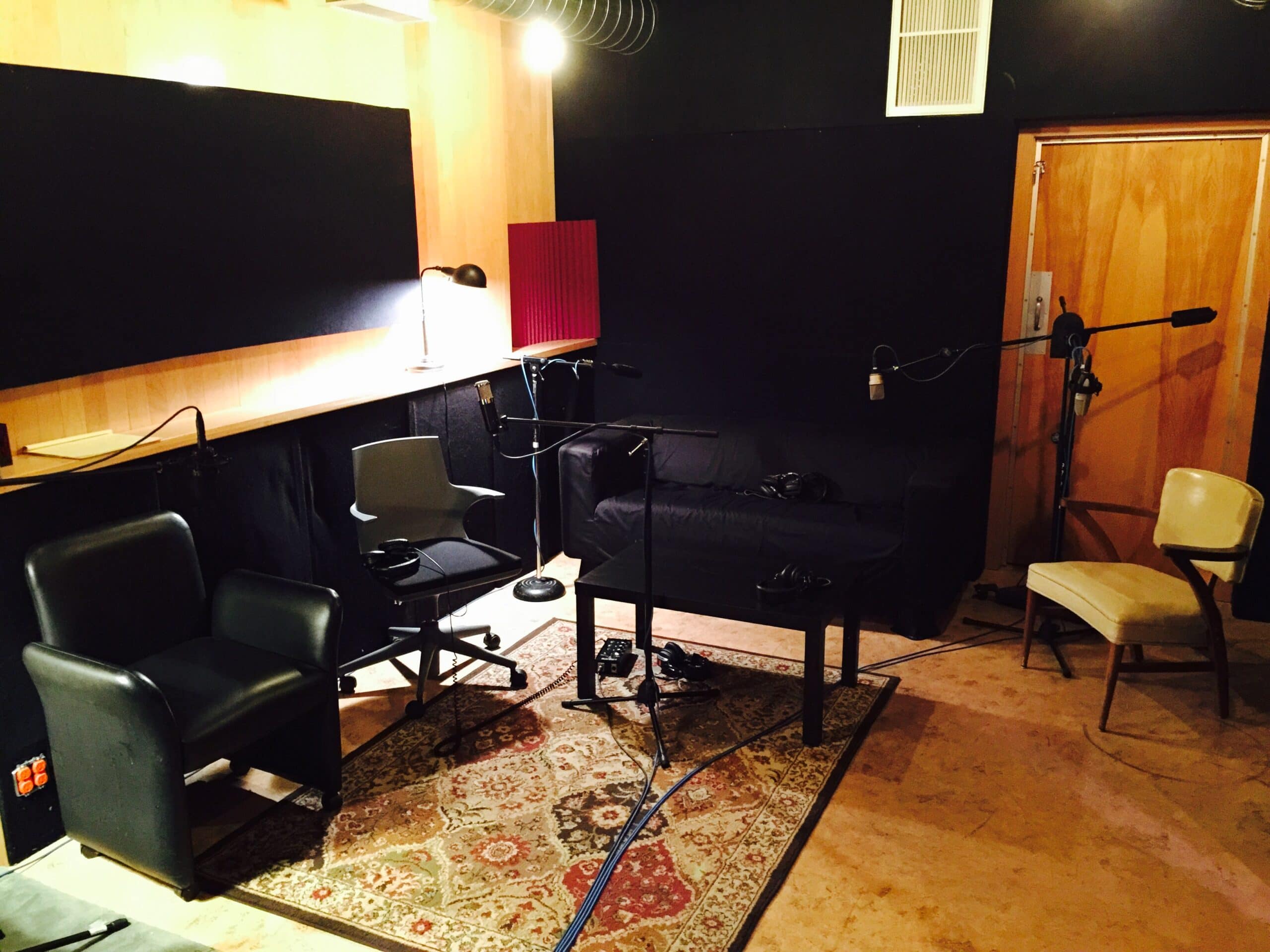
MM: When I speak to clients a lot of them have a hard time wrapping their mind around it, it’s like you’re showing them something from the future! You have to explain it. Especially with ADR. There’s always the same questions – “we’re syncing picture in real time!? And the audio is good enough to use!?”
What Source Elements solution are you using at Santisound post-production studios?
RS: We use Source-Connect Pro and Source-Connect Now, Source-Zip and Source-Live. Don’t use Source-Nexus – just because I personally, with a tech background, try to tax the engine as little as possible. I like to use hardware; we just go digital out of the Mac and back into the 192. Or in some cases even have a separate computer that runs our Source-Connect or any kind of internet connection, and we just pipe it into the Pro Tools system.
Do you tend to find that voice artists, even if they’re not ‘techie’ can work out quite quickly how to use Source-Connect Now when you’ve sent them a link? Does it work straight out of the box for the people you send it to?
RS: Yeah it definitely does; most of the time. The only issue you can run into is their internet connection. Or they don’t have headphones on! We were dealing with that recently, we couldn’t figure out what was going on with the sound. Turns out, the talent had their monitors on instead of wearing headphones.
MM: We do a lot of voiceover demos for voiceover artists, and a lot of time they’ll be mid-country and a lot of them are more on the creative side than the techie side, and it works really well. We’ll send them a link, and we’ve never run into a problem where it’s been more than a couple of minutes to get them up and running.
RS: With the regular version of Source-Connect sometimes we do run into a few minor issues just because it’s a little more technically involved or advanced than the NOW version where it’s just kind of click and go. But in most cases once they set it up it’s pretty much sign in and go.
Would you say that using Source Elements has actually generated business, opened doors that wouldn’t have been there otherwise?
MM: Sure, definitely. It’s been a really good selling package especially for the featurettes that we work on. When we are starting a feature film, by the time we get the picture they’ve already been editing for a couple of months and the actors in the film are already on their next project so they’re are all over the world – Canada, Russia, anywhere – so a lot of times that’s been a big selling factor for us, the fact that the actors needing to do ADR or replacement lines don’t have to be local or wait until they’re back in Hollywood, and the producers don’t have to worry about the cost of an ISDN line; we can just set them up in a studio when they have a downtime on a shoot, wherever they happen to be filming.
It’s been a real selling point; producers and directors really like it, it means they don’t have to be as involved with the scheduling. We can just have a Source Elements connection and they can be anywhere.
RS: Just as an example to illustrate, we were working on a picture that posted up last year, with several well-known actors in, and in a span of two days we did ADR with four actors – Cary Elwes who was in Vancouver, Dominic Sherwood in Canada as well, and Drea de Matteo and Jill Hennessey in New York. We connected to Vancouver and New York in the same day – in the span of eight hours over two days we were able to grab all these actors. We hooked up via RTS and Source-Connect Pro, the connecting studio controlled our system from their end and it was pretty solid, worked out really good.
You’ve talked so far about pick up and getting assets in; have you used Source-Connect for getting directors to see cuts or listen to playback, that way round?
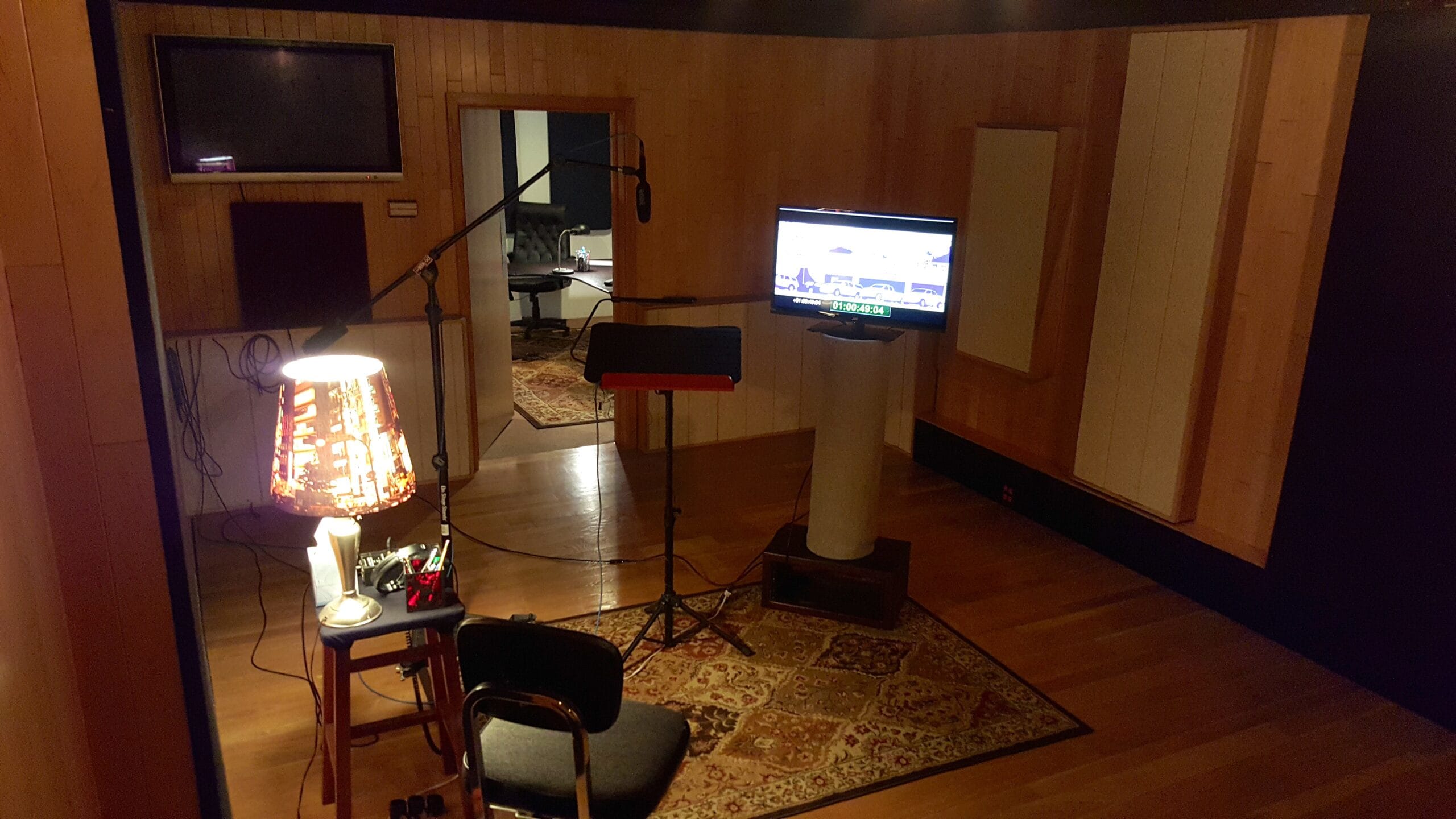
RS: Yeah kind of in the same fashion as we’ve done Source-Connect Pro for ADR where we control the system on the other end, we’re getting into using Source-Live now. I think Source-Live is going to start entering the workflow more as we don’t necessarily need another studio involved at that point to be able to play something back.
If look back ten or twenty years ago that this kind of stuff would been happening, would you believe it?
MM: Not at all! Even today Rick and I look at each other now and then and are just amazed with it. The ability you have with it is incredible. When I first got into the post side of things I was freelancing and had a detached studio at my house. I was doing a TV show and even then with the internet speeds and all, if I had to mix shows they would have runners run out with five giant drives to my house! If I was doing notes or tweaks on a mix they’d have to show up at 2am at my house because we were delivering the next day, I’d do small tweaks and the runner would sit there then take the drives back. If you’d told me back then I wouldn’t have thought it possible.
Ten years ago you couldn’t even send files over the internet – let alone in real time – they were too large and would take all day. I wouldn’t have been able to comprehend that now you can sync picture in real time with China, doing ADR lines with miniscule lag or delay. I’m really not trying to sound like a salesman but it’s the truth! It’s amazing sometimes. Where technology has gone nowadays is just mindboggling, and even though we’ve been using it for a long time it blows us away.
RS: So it’s the advances in everything not just Source Connect, how bandwidth has changed worldwide communication.
Have you ever felt compromised security-wise using Source Elements’ systems?
RS: No. Obviously when you’re working with ADR you have to send a copy of the session to the connecting studio because they have to have the local media when using RTS. That falls back on the old traditional methods of making sure everything is secure, making sure everybody knows the amount of security that’s needed on a specific picture, getting NDAs signed and all that. So I don’t think it’s necessarily an issue.
The security issues are the same they’ve always been, you’ve just got to be real careful as to who you send the stuff to and who’s on the line, and if you suspect anything just terminate connection as fast as possible. But you know you’ve still got to send the media out. Nothing has ever got out when it shouldn’t have, ever. Not even a whiff or hint of it.
MM: We take the normal precautionary steps to make sure that there’s the least amount of ways for it to get out as possible, like not sending finished pictures, or high-quality picture. Just scenes rather than whole reels.
Finally tell us, what’s special about Santisound as a studio?
RS: Our setup isn’t like a traditional post-production studio with a regular office feel and bland quiet hallways; the color palettes are very loud around here!
MM: We really try to take a unique angle and specialize in the creativity of the process of post-audio. We built the studio less like an office, more like an art gallery or a creative space, so when you walk in you really feel the energy of the space. And we feel it really works for us. It helps directors and producers to be more relaxed and creative.
RS: We’re a large boutique facility, we can accomplish what a giant facility can do. We have the flexibility to take small projects, independent films and small trailers, but we can also handle a large feature film from top post-production to bottom.
It’s when you chat to guys like these – creative minds at the very top of their game (on a crystal-clear connection across the time zones) – that you realise what a vital role Source Elements’ solutions are playing in the evolution and perfection of audio technology, facilitating the very best in sound solutions on a genuinely international basis.
More info about post-production studio Santisound Hollywood:
https://www.stage32.com/lounge/introduce_yourself/Santisound-Post-Production-Sound
Find more post-production studios:
https://source-elements.com/news-and-stories
Do you want to transform your post-production studio into remote and virtual post-production studio?
https://source-elements.com/products/source-nexus

